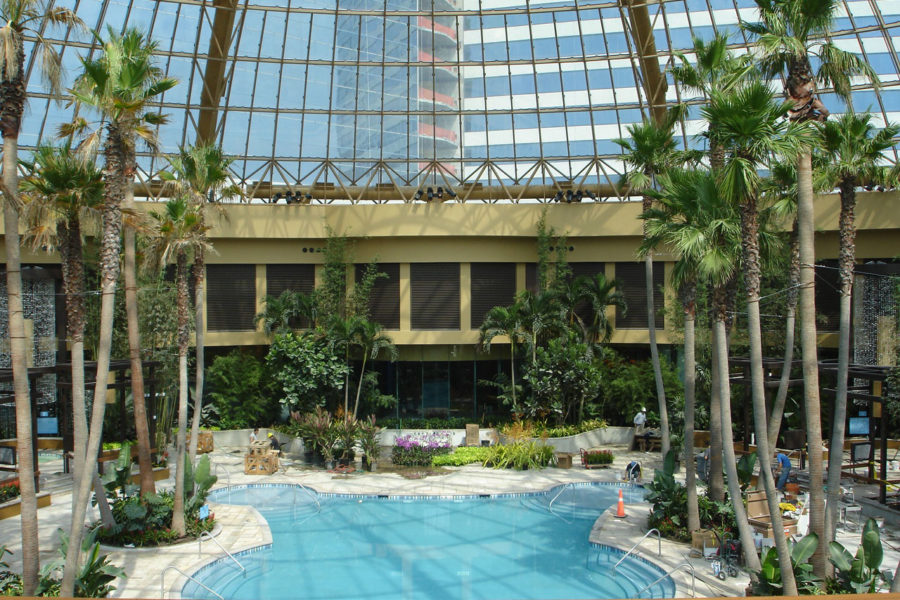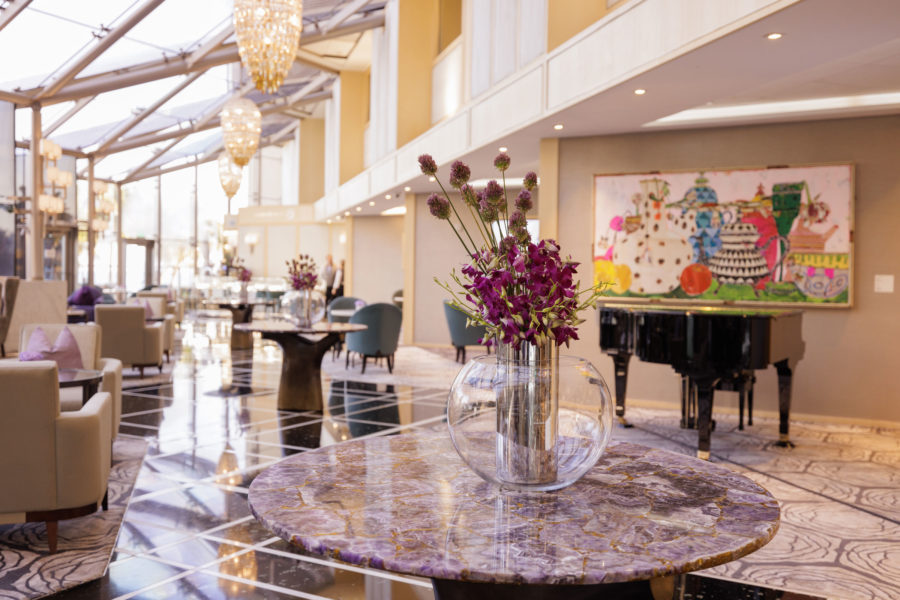Story at a glance:
- People-centric design appeals to all of the senses, including sight and smell.
- Plants make a big difference to enhance people’s moods inside a space.
- Air hygiene should be a non-negotiable in people-centric designs.
According to a 2023 study more than half (50.4%) of US office space is filled for the first time in nearly three years. While many may not be in the office five days a week like in pre-pandemic times, this is a sign that workers are indeed returning to the office.
In addition to those returning to the office, restaurants, shops, and lodging spaces are also seeing a long-awaited spike in in-person traffic. As more people return to life outside the home, designers will be challenged to create and revamp spaces that cultivate health, wellness, and inspiration from within.
Creating smarter, healthier spaces that spark inspiration for various target audiences involves more than simply improving cleaning initiatives. People-centric design is multi-sensory. It’s generated when designers and building owners take a step back, focus on what really matters to people, and understand how to best utilize design techniques and trends like plants, indoor air enhancements, biophilic design, and premium scenting to spark inspiration. While there is no one-size-fits-all approach to people-centric design, designers should consider incorporating these four features into their multi-sensory designs:
1. Plants
Adding greenery to interior and exterior spaces has been scientifically proven to enhance people’s moods and perceptions of that space. Designers can go as simple as adding a few tabletop plants to a register or desk or as grand as adding show-stopping living green walls that are sure to catch the eye of passersby.
Tabletop plants are a quick and easy way to incorporate a piece of nature while also adding a bit of color to a space. From the exotic Anthurium Lady Jane to the eye-catching Scindapsus Neon, nothing brightens a room quite like a beautiful table plant. Decorating a business with healthy and attractive plants will convey to clients, customers, and employees that they are in a welcoming place. The sight of lush greenery not only relaxes the inhabitants of the interiors but also cleans the air of harmful toxins and helps reduce noise levels.
Designers can take this a step further by incorporating floor plants with beautifully designed containers into the space. Freshen a drab reception area or greet guests with an exterior walkway of carefully selected plants that accentuate the brand’s unique vision. From lush Philodendrons to stately cacti, floor plants range greatly in appearance, color, size, and required care. Designers can work with plant care experts to understand which floor plants are recommended for their unique space and needs.
A third way to use plants to spark inspiration and enhance people-centric design is with living green walls. Living green walls are a beautiful way to increase energy and functional efficiencies but more importantly to engage people. Whether it’s new construction from the ground-up or a major renovation, designing spaces with living green walls creates an extraordinary experience that will stimulate and inspire the people who drive a business forward and the customers who support it. From low-maintenance moss walls to full green wall irrigation systems, there is a green wall solution for many design needs.
2. Air Hygiene

Photo courtesy of Ambius
Plants are a great way to enhance a space visually, but air hygiene improvements are just as, if not more, important when it comes to designing a smarter, healthier space. Without access to clean, healthy air people can experience mental fatigue, fogginess, and other health symptoms that can have a direct impact on their overall performance.
Indoor air can be up to five times more polluted than outdoor air. Whether shopping at a store, dining in a restaurant, working from an office, or any number of the other common daily indoor activities, building occupants can be exposed to a range of contaminants in the air. These include viruses, bacteria, and other germs, allergens, and dangerous volatile organic compounds.
To address these issues designers should consider making air hygiene a non-negotiable in their people-centric designs. Wall-mounted or standing tower air decontamination units are a great way to attack indoor air contaminates while showing building occupants their health and safety are a top priority. Look for air decontamination units with unique features like real-time monitoring displays designed to track the current state of the indoor environment.
Designers can take air hygiene measures a step further by ensuring the units are working in sync with the building’s regularly inspected HVAC units. To ensure the HVAC system is running at its full potential, work with a trusted service technician to understand what type of filter is needed. The HVAC minimum efficiency reporting value (MERV) rating, typically between 1 and 16 for most residential and commercial buildings, will define the unit’s filtration capability. When correctly fitted with the unit’s recommended MERV filter, an HVAC system can work to clean the air by effectively trapping smaller particles as they enter the room. Portable air purifiers help to additionally clean the air as it passes through the room, working as a supplement to the HVAC system.
3. Biophilic Design

Photo courtesy of Ambius
Biophilic design is another great way to enhance indoor environments. At its core biophilic design is an architectural framework inspired by the natural world that weaves the organic patterns of nature into the built environment, strengthening the human-nature connection people crave. Designers can reduce the negative impacts of sterile, lean indoor spaces and enhance the environments by integrating biophilic features.
In addition to green walls and plants, other biophilic design features may include water elements, increased natural light, open-air or outdoor spaces, natural wood or stone features, and other components. These biophilic design elements effectively create a positive response as if people were exposed to natural stimuli in real life.
The philosophy of biophilia has led to somewhat of a renaissance within the construction and architectural industries. Wellness and sustainable design practices like the WELL Building Standard and LEED continue to take on increased importance within the built environment. It’s this collection of standards, sustainability initiatives, and wellness programs stemming from biophilic principles that are generating the change people are beginning to see integrated into indoor environments from coast to coast.
As more and more research is released about biophilia’s benefits and WELL initiatives become commonplace, biophilic design enhancements are quickly rising in popularity. Designers and building owners who understand the scientific research, mental and physical benefits, and growth of their bottom line will be one step ahead in creating a people-centric design.
4. Scenting

Photo courtesy of Ambius
Impactful designs tap into multiple senses. The fine details of interior spaces should go beyond what people see and feel. One of the best ways to ensure a design truly stands out is to create a sensory experience that engages the sense of smell.
The right scent can trigger memories and have a truly powerful psychological impact on anyone who walks into a business. Conversely, the wrong scent can negatively affect the customer experience in an equally powerful way. Implementing a scenting program in interior spaces has many benefits:
- Eliminates unpleasant odors
- Increases dwell time in retail spaces
- Elevates mood
- Fosters brand identity
- Reduces stress
Enhance premium scenting with odor remediation technology in high-traffic areas like restrooms, break rooms, and near trash facilities. This technology is designed to release micro-droplets that remove, neutralize, and eliminate odors entirely. Fresh, bright scents like zesty citrus, energizing mint, and fresh cucumber can be leveraged to foster confidence in a healthy environment, offer the reassurance of well-being, and amplify feelings of cleanliness.
Whether trying to foster an inviting retail environment, put people at ease at a health care facility, or create an enhanced guest experience in a hospitality space, premium scenting can be used to create a memorable branding experience for any interior space. Designers looking to create a people-centric atmosphere can work with scenting experts to identify an ambient scent that will spark inspiration while creating a multi-sensory brand experience.
Day-to-day life may be mostly back to normal now, but so much had changed since the pandemic. Now more than ever people are hyperaware of their surroundings and how those environments can impact their health and well-being. Design standards that were once considered acceptable now do not meet consumers’ minimum expectations.
Creating a people-centric environment looks at what’s truly important to the occupants of that space, taking a hand-crafted approach toward cultivating an environment that will meet those higher expectations. Designers and building owners who tap into a multi-sensory brand experience through plants, air hygiene, biophilic design, and premium scenting will spark inspiration through those designs. They will set themselves apart as a unique and memorable brand.


